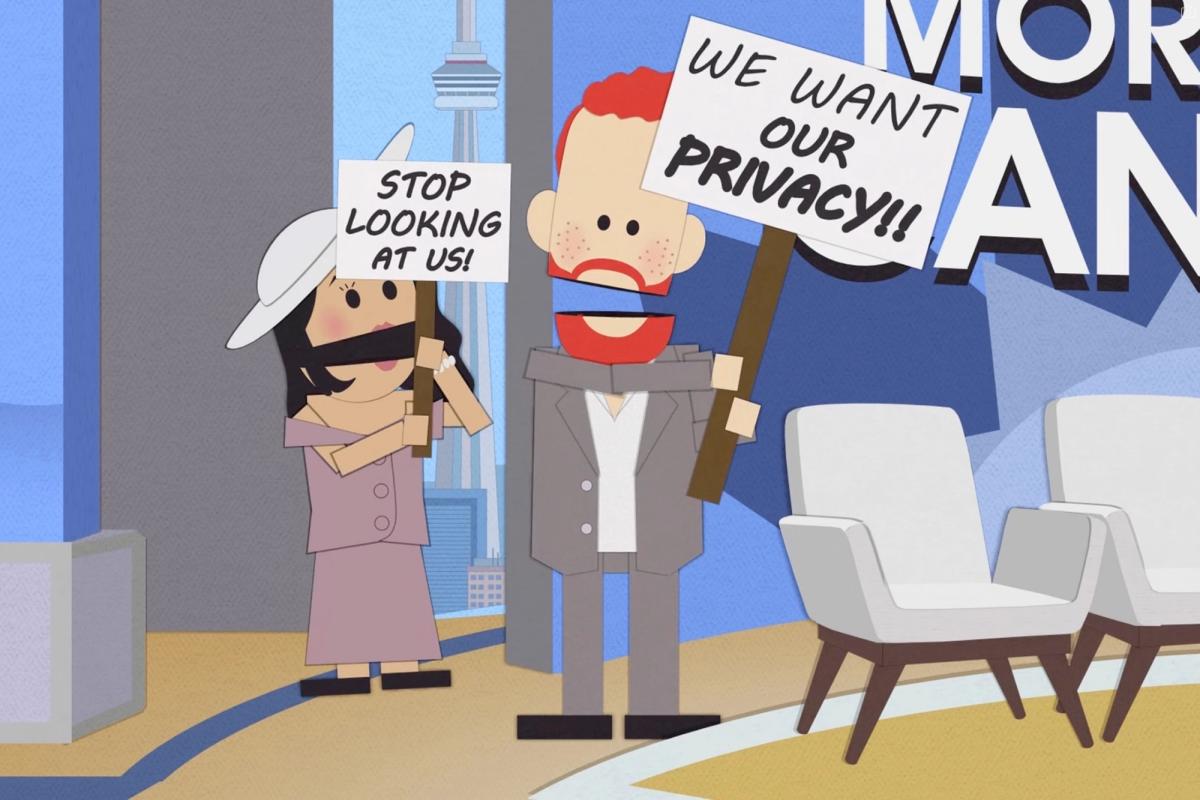
🏆 Recognizing #StoriesThatMatter. Never miss a newsletter! Sign up and have #PeabodyFinds delivered to your inbox.
How Does ‘South Park’ Get Away with It?
I remember the first time I saw South Park, and the sheer shock of it all: Here was an expletive-laced, animated sitcom whose Christmas episode centered on a sentient piece of poop named Mr. Hankey, with a plot that included a kid committed to a mental institution, animated children performing to Phillip Glass, and Jesus singing “Happy Birthday” to himself. This episode during the Comedy Central show’s first season in 1997 wasn’t quite like anything I’d seen on television before. It made The Simpsons, once considered transgressive, look as harmless as The Flintstones. At that moment, South Park was gaining popularity as people, especially young adults, introduced it to one another with “you’ve got to watch this, you’ll never believe it” enthusiasm.
South Park doesn’t come with a complicated premise—it’s about four 10-year-old boys, Stan, Kyle, Eric, and Kenny—in a Colorado town, surrounded by many colorful, recurring characters. It’s real calling card is its humor–a fearless, dark, surreal satire of American culture that contrasts with the simple, deceptively cute animation style. That simple style is also a secret weapon, allowing for short production schedules and quick reactions to current events, with turnaround to rival Saturday Night Live.
What’s remarkable, now even more so than in its ‘90s beginnings or 2000s heyday, is its willingness to lampoon anyone or anything it deems extreme or hypocritical. That means the show eviscerates both sides of the political spectrum and all things “politically correct,” yet never falling victim to “cancel culture.” That approach is particularly bracing in the age of hyper-partisanship, when most shows can be easily categorized as “left” or “right,” and in light of the “Great Awokening” of the last decade or so. In fact, creators Trey Parker and Matt Stone identify as libertarians, while both liberals and conservatives have embraced South Park as a champion of their values sometimes, while railing against it at others. It has taken the blame for the rise of the alt right as commentators searched for explanations in the wake of Donald Trump’s election in 2016, but it hasn’t gone easy on Trump, and it has espoused its share of liberal talking points, issuing sharp critiques of police armament and Covid denialism (see below).
After 26 seasons, the boys are still 10 years old, and the world keeps churning out ridiculous people and phenomena for them to take down. Here are five episodes from the last decade of the Peabody winning show that prove its edge is as sharp as ever.
Where to Watch: Max
‘Worldwide Privacy Tour’ (season 26, episode 2)

South Park takes aim at Harry and Meghan, the Duke and Dutchess of Sussex, and their publicity tour after stepping back from royal duties, which included an interview with Oprah, a Netflix reality series, and Harry’s blockbuster memoir. In this episode from early this year, the show’s royal proxies, the Prince of Canada and his wife, tour the world, making a scene everywhere they go while constantly chanting their demand for privacy. They end their trip by settling in South Park across the street from Kyle and cause relentless disturbances—playing the drums in the front yard, breaking his windows, setting off fireworks—and then haranguing Kyle for paying attention to them. In a pointed subplot, Kyle sets off on his own mission to “rebrand” himself with the help of a crudely named company whose every “brand” suggestion includes being a “victim.” Coming within weeks of Harry’s inescapable round of interviews for his tell-all Spare, the episode cut straight to the hypocrisy at the center of the spectacle, underlining the show’s tradition of sharp criticism of the celebrity-media complex
‘Sons a Witches’ (season 21, episode 6)

In another incredibly timely response to headlines—this time the Harvey Weinstein sexual abuse scandal that launched the #MeToo movement—2017’s “Sons a Witches” pulls off a combination that few, if any, other shows could: a Halloween episode that also plays as a commentary on the toxic masculinity that enabled Weinstein’s crimes, one that does not spare the nation’s then-witch-in-chief. The plot has South Park’s dads celebrating their annual Witch Week, in which they all dress in the requisite costumes, go up to the top of a local mountain, and drink Jack Daniels and smoke crack. When one of them becomes an actual witch after an accidental spell is cast, he flies around South Park blowing things up and kidnapping children. This sparks a town-wide backlash against all witches and witch activity; the men complain that not all witches should be under suspicion in this “witch pursuit thing.” It all culminates with a visit from the Trump-like President Garrison, who is revealed to have been part of the coven himself—and loves to complain about “witch hunts.”
‘The Pandemic Special’ (season 24, episode 1)

It’s hard to overstate how bonkers this episode gets, even by South Park standards. Perhaps because the world itself was churning out insanity faster than we could process it in 2020, the show had to up the ante to actually work as a parody. It begins with Stan’s dad, Randy, making a handy profit from his weed business by offering a “Pandemic Special,” the episode’s running self-referential joke. Over the course of the hour, Randy comes to the stark realization that the pandemic is actually his fault because he, along with Mickey Mouse, had illicit relations with a bat, and also a pangolin, while on a trip to Wuhan the previous year. Things get more explicit from there. Meanwhile, the kids go back to school with recently defunded cops—the only people willing to work under such circumstances—standing in for their teachers, and a fight between (white) Cartman and Kyle lead the police to shoot the Black kid at school (who, in true South Park fashion, is named Token Black). There is, somehow, still so much more, with devastating takedowns of Disney, Trump, and police violence along the way, and a final showdown at a Build-a-Bear.
‘The Hobbit’ (season 17, episode 10)

Fair warning: This is an episode featuring Kanye West as a character. It’s also, against all odds, a genuinely affecting meditation on how technology has affected girls’ body image. This 2013 installment has cheer captain Wendy telling people that Kim Kardashian actually has the body of a hobbit, which is Photoshopped to look like the bombshell we all recognize. As a result, Kardashian’s then-fiancé, West, visits the school to dispute this claim—and even storms the stage to interrupt Pope Francis being named Time magazine’s Person of the Year to further spread the word. Unfortunately, the kids learn all the wrong lessons from the uproar. Kardashian is an easy target, but South Park isn’t taking cheap shots here, instead making a real point about celebrity worship, digital images, and girls’ mental health, demonstrating how its irreverence can serve a greater good.
‘Skank Hunt’ (season 20, episode 2)

An internet troll going by Skankhunt42 is terrorizing the citizens of South Park online, even driving student Heidi Turner to—gasp—delete her Twitter account and throw her phone in the river. (This was in 2016, long before Twitter became X.) Amid widespread presumption that the troll is a student, and likely a boy, the girls unite against the boys, and the boys unite against Cartman, whom they suspect is the culprit. The joke is that all along, we’ve known that the troll is Kyle’s mild-mannered lawyer dad, Gerald, who likes to pour a nice glass of red, play some Boston on vinyl, and vent his worst tendencies anonymously. It’s an intriguingly insightful idea about trolls.
Trey Parker’s Peabody Acceptance for ‘South Park’
The show was recognized way back in 2005 for its ability to deliver satire that “pushes viewers to confront broader issues such as racism, war, mob mentality, consumerism, and religious fanaticism.”
Where to Watch: PeabodyAwards.com
